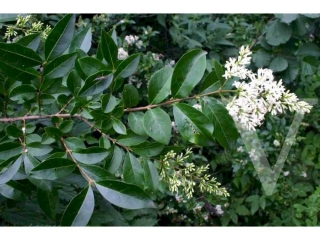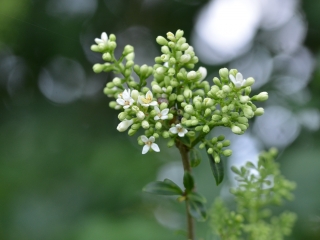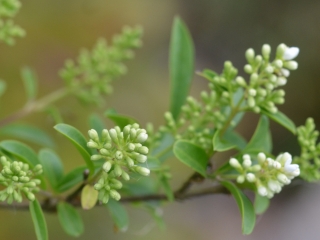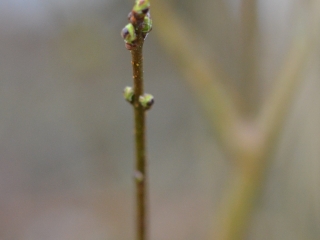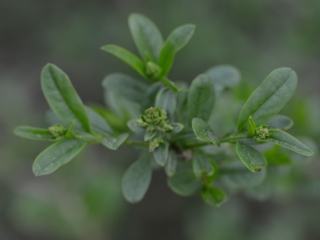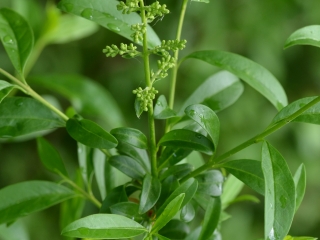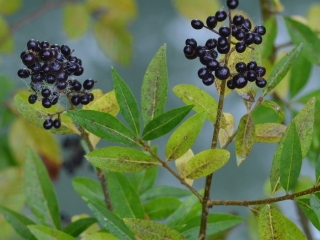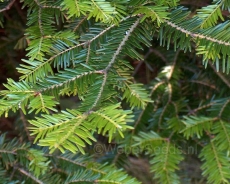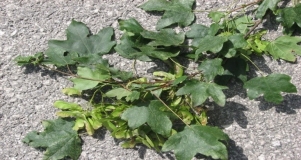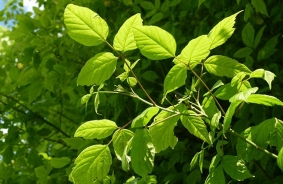Wild privet Ligustrum vulgare
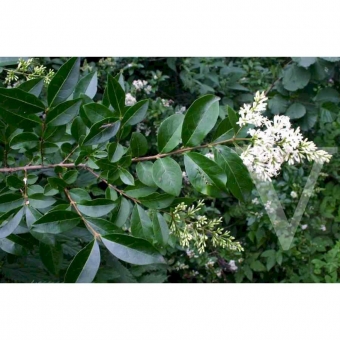
Features
Ligustrum vulgare (wild privet, also sometimes known as common privet or European privet) is a species of Ligustrum. It is a semi-evergreen or deciduous shrub, growing to 3 m (rarely up to 5 m) tall.
| Species | Scrubs (Nanofanerophytes) |
| Living space | Bright forest, Treeline |
| Size | up to 3 m |
Description
The stems are stiff, erect, with grey-brown bark spotted with small brown lenticels. The leaves are borne in decussate opposite pairs, sub-shiny green, narrow oval to lanceolate, 2–6 cm long and 0.5–1.5 cm broad. The flowers are produced in mid-summer in panicles 3–6 cm long, each flower creamy-white, with a tubular base and a four-lobed corolla ('petals') 4–6 mm diameter. The flowers produce a strong, pungent fragrance that many people find unpleasant. The fruit is a small glossy black berry 6–8 mm diameter, containing one to four seeds. The berries are poisonous to humans but readily eaten by thrushes, which disperse the seeds in their droppings. It mostly grows on fresh, deep humus soils with a somewhat basic reaction, but also tolerates poorer sites. It is suitable for constantly moist soils, but also grows in dry habitats. It is a thermophilic plant, but it is not affected by the winter cold. As it is a semi-light-loving species, too much shading does not suit it, it tolerates polluted city air well. It is naturally distributed throughout almost all of Europe, except in the north, it is also found in Asia and the Caucasus. It grows autochthonously throughout Slovenia from the lowlands to the mountain belt, most often in oak forests in the lowlands and hills. It grows in forests, forest edges, along paths and paths, it is often planted.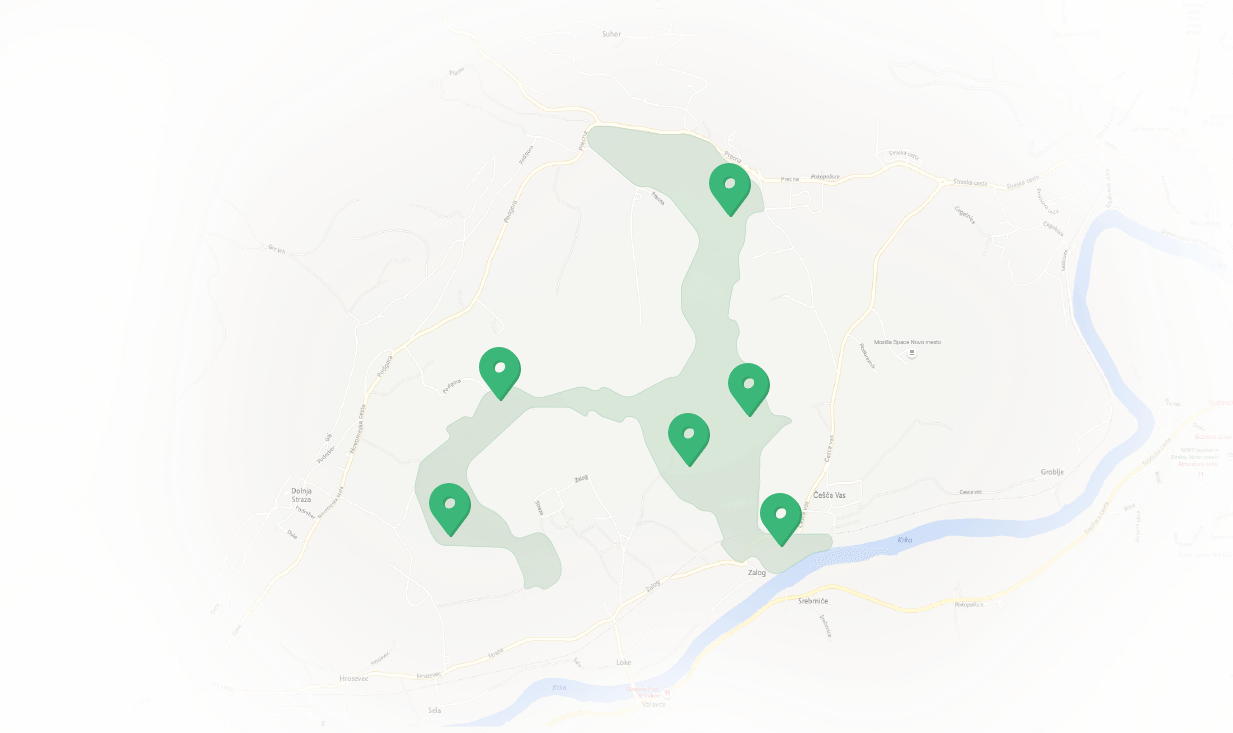
Features Temenica (3)
SPECIAL ogr.

